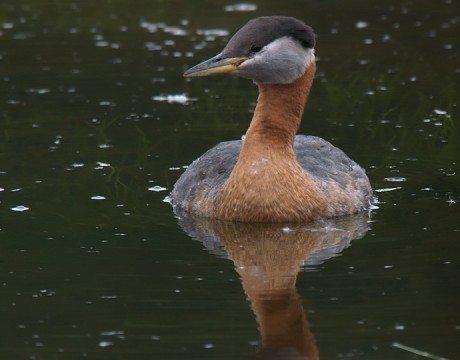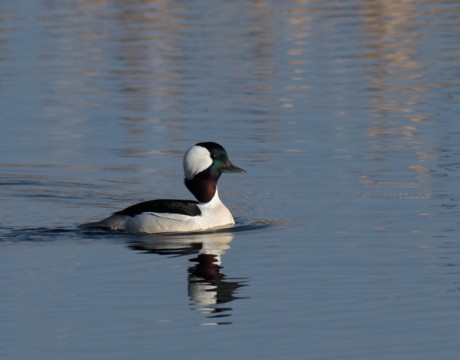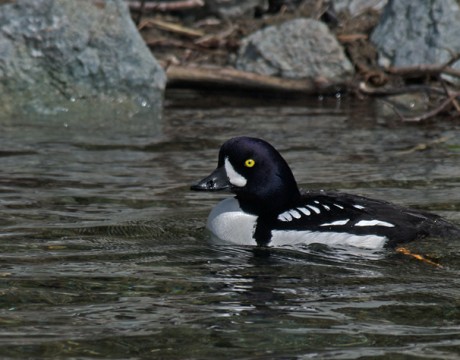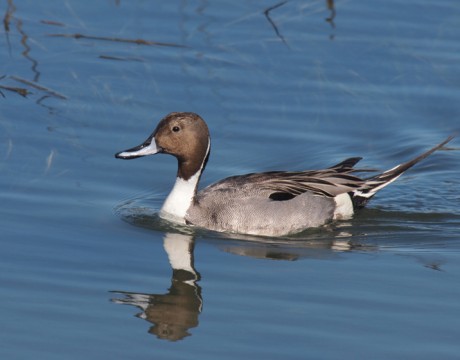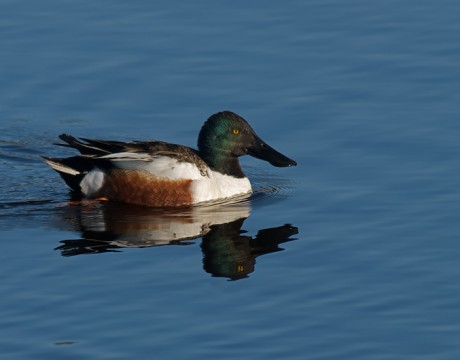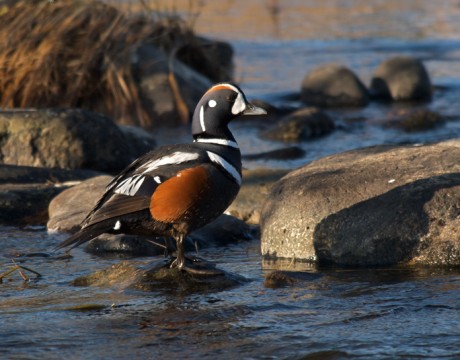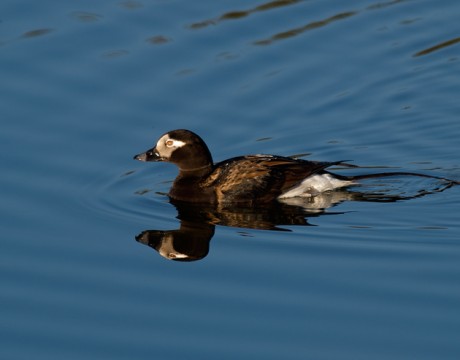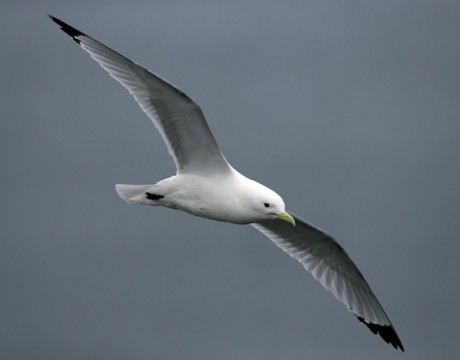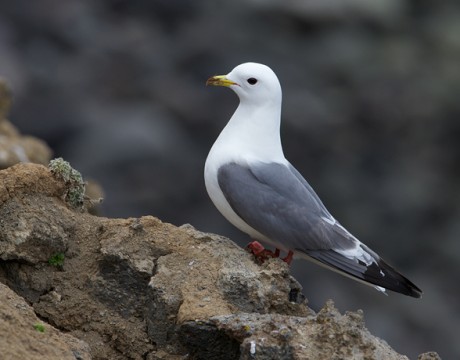Bird of the Week – Red-necked Grebe
The Red-necked Grebe is the larger of Alaska’s grebe species. North American Birds described this species as “territorial and interspecifically aggressive, commonly threatening or making underwater attack dives against other waterbirds that enter its breeding territory.” It’s a bully, and a raucous, noisy bully at that. That’s right; it’s a Redneck. It typically nests on slightly larger ponds than its smaller cousin, the Horned Grebe. Unlike most waterbirds, this grebe builds its nest on a floating nest of bulrushes. If the water rises, the nest floats up, instead of being drowned. For more bird photos, please visit Frozen Feather Images.
Dan Sullivan’s Website of Lies Continues
Ok, maybe that’s a bit of a dramatic title for this piece, as we’re not talking about something criminal, just criminally stupid. Over the past couple months I’ve written about many of DC Dan’s awkward photographic adventures into Alaska, eventually causing him enough shame to switch his photos to ones actually taken in Alaska. I thought DC Dan’s adventures were finally done – his campaign long out of the early stages, and running at full speed, raising hundred of thousands of dollars. I would have guessed that he might actually have gotten some researchers to join his staff, maybe even some locals…
Bird of the Week – Bufflehead
North America’s smallest diving duck is the Bufflehead. With his dramatically colored head– it looks like a white dome from a distance – this is another easy waterfowl to identify in the field. This duck winters in salt water, but nests in the boreal forest in tree cavities. Or boxes if someone has put a box up near a pond. The kids, at 1-2 days old, jump from the nest cavity to the ground and then follow the hen to the nearest body of water. The Bufflehead is a close relative of last week’s Goldeneyes. For more bird photos, please…
Bird of the Week – Northern Pintail
If last week’s bird is obvious for its bill, the Northern Pintail is famous for the drake’s namesake tail. Apart from the impressive tail, the white stripe extends up into the chocolate brown neck and the bill is silver and black. Altogether a handsome bird. Like the Northern Shoveler, the Pintail is a dabbler, foraging in the top of the water column. As often as not, what you see are duck butts. For more bird photos, please visit Frozen Feather Images.
Bird of the Week – Northern Shoveler
The Northern Shoveler’s bill gets all the attention, distracting you from noticing that the drake and the hen are both very handsome ducks. Shovelers are dabblers, birds that feed in the top of the water column without diving entirely underwater. The Shoveler’s bill is well-adapted to that role. The Shoveler hen is much less flamboyant, with cryptic coloration that makes her hard for predators to find when she is on eggs. Some ornithologists speculate that the male hangs around as a distraction for predators until the eggs are hatched. But that is quite a bill, isn’t it? For more bird…
Bird of the Week – Harlequin Duck
For the WC, only the Wood Duck is more spectacularly colorful than the a Harlequin Duck drake in breeding plumage. And, unlike Harlies, Woodies don’t occur in Alaska. Not only are Harlequin drakes handsome; they seem to pose in striking nice positions. So far as WC knows, Harlequin drakes only have one critic: Harlequin hens. Readers are invited to offer their own caption to the photo. Harlequin Ducks migrate inland to breed and then return to their true home, near-shore salt waters in coastal Alaska and the Pacific Northwest. For more bird photos, please visit Frozen Feather Images.
Bird of the Week – Long-tailed Duck
WC has been accused of neglecting waterfowl in his selection of Birds of the Week. Ironically, WC is a graduate of the University of Oregon, a Duck – a Fighting Duck. So WC will post a few duck photos, honoring his alma mater and answering certain carping quacking critics. We’ll start with the Long-tailed Duck. Formerly known as Oldsquaw, the Long-tailed Duck spends most of its life at sea. In the winter, you can find rafts of thousands of Long-tailed Ducks off shore of Kodiak Island, so many that despite the distance you can hear the calls. Which does indeed sound…
Bird of the Week – Black-legged Kittiwake
A handsome, delicate-looking gull, the Black-legged Kittiwake breeds in southcentral and southwestern coastal Alaska. Generally a colonial breeder, some of the rookeries are immense. The species’ name probably comes from its call, which does sound very much like “kittiwake”. A small number of non-breeders can usually be found along the bridges on the easterly side of Valdez Arm. The lemon-yellow bill, jet blacklegs and black-tipped wings are reliable field marks for this species. For more bird photos, please visit Frozen Feather Images.
Bird of the Week – Red-legged Kittiwake
There are only a handful of places in the world where you can see this gull. The Red-legged Kittiwake is found in the Pribilof Islands, a few of the Aleutian Islands and parts of Siberia. A small, handsome gull with the signature bright red feet, it nests on St. Paul Island. This bird’s bill is dirty from hauling grass and mud 3/4ths of a mile to a nest on the steep, high cliffs known as Kittiwake Condos on the northwest corner of the island. It’s two miles uphill from where the guides park the van, but it’s worth the walk….





